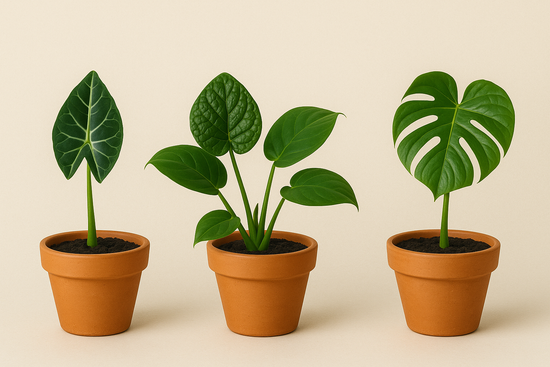Further tips for good anthurium care
Fertilizing Anthurium
During the growing season from spring to fall, the anthurium benefits from a dose of liquid green or flowering plant fertilizer about every two weeks. This provides it with essential nutrients and promotes the formation of its characteristic, vibrant blooms. Make sure to only fertilize on moist substrate to protect the roots. During the winter months, it is sufficient to fertilize the anthurium only occasionally, or not at all.
Repotting anthurium
You should repot your anthurium approximately every two to three years to ensure it has enough space for its roots to grow. The best time to do this is spring. When repotting the anthurium, use loose, well-draining soil—special anthurium or orchid soil is ideal, as it retains water well but doesn't allow waterlogging. Make sure the new pot has good drainage so the roots can develop healthily and avoid waterlogging.
Note the rest period in winter
During the winter months, the Flamingo Flower enters a natural dormancy period. During this time, you should adjust your care for your Anthurium: It grows more slowly, produces few new leaves, and usually no flowers. Water sparingly, without allowing the substrate to dry out completely, and largely avoid fertilizer. Also, avoid relocation and draughts. Stable conditions will help your plant survive the winter healthily and sprout again in the spring.
Anthurium care mistakes you should know and avoid
Too frequent changes of location
Anthuriums are sensitive plants that adapt slowly to new environmental conditions. Changing your anthurium's location too frequently can lead to growth delays or even the shedding of flowers and leaves. Light intensity, humidity, and temperature, in particular, should remain as constant as possible. A stable, suitable location promotes both flower formation and leaf health. If you want to ensure long-term success in caring for your anthurium, avoid unnecessary relocation.
Too much water
If your Anthurium gets yellow leaves, it's often a sign of overwatering or waterlogging. The roots of the Flamingo Flower are sensitive to persistently wet substrate and quickly begin to rot, resulting in yellow, soft-looking leaves. A lack of light or nutrients can also contribute to yellowing. Check the watering rate, drainage, and location to ensure your plant is receiving optimal conditions.
Dry air or too much sun
If your Anthurium receives too much direct sunlight, brown, dry spots can form on the leaves. Excessively dry air, especially in winter, can also lead to brown edges or curled leaf tips. Since the Flamingo Flower prefers high humidity and indirect light, you should ensure a suitable location and a balanced indoor climate to prevent such damage.
FAQ on Anthurium Care
Where does an anthurium need to be located?
A bright spot with indirect light is ideal for anthuriums. Direct sunlight should be avoided, as this will quickly cause brown spots.
How often do you need to water an anthurium?
Water your anthurium regularly, but moderately. The soil should always be slightly moist, but never wet. Excess water must drain well to prevent the roots from rotting. A pot with a drainage hole and permeable soil is ideal.
When does the flamingo flower bloom?
Under favorable conditions and with optimal care, the anthurium produces flowers for many months. The main flowering period is usually in spring and summer.
Why are my flamingo flower leaves turning brown?
If your anthurium develops brown leaves or leaf tips, it's often due to overly dry air. Especially in winter, when the air is too dry from heating, it can be helpful to increase the humidity around your anthurium, for example, by misting it or using a humidifier.
Anthurium (Flamingo Plant) variety
-
Anthurium Delta Force S (A. Clarinervium x Pedatoradiatum)
 Anthurium Delta Force S (A. Clarinervium x Pedatoradiatum)
Anthurium Delta Force S (A. Clarinervium x Pedatoradiatum)- Regular price
-
From
€11,99 - Regular price
-
€39,99 - Sale price
-
From
€11,99
-
Anthurium Veitchii Narrow
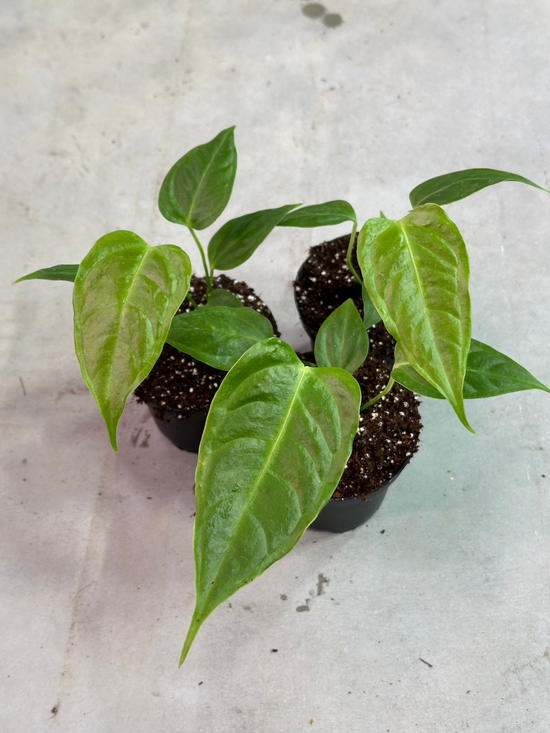 Anthurium Veitchii Narrow
Anthurium Veitchii Narrow- Regular price
-
From
€5,99 - Regular price
-
€19,99 - Sale price
-
From
€5,99
-
B Ware / Sad Plant (We Choose)
 B Ware / Sad Plant (We Choose)
B Ware / Sad Plant (We Choose)- Regular price
-
€10,00 - Regular price
-
€10,01 - Sale price
-
€10,00
-
Anthurium shelves
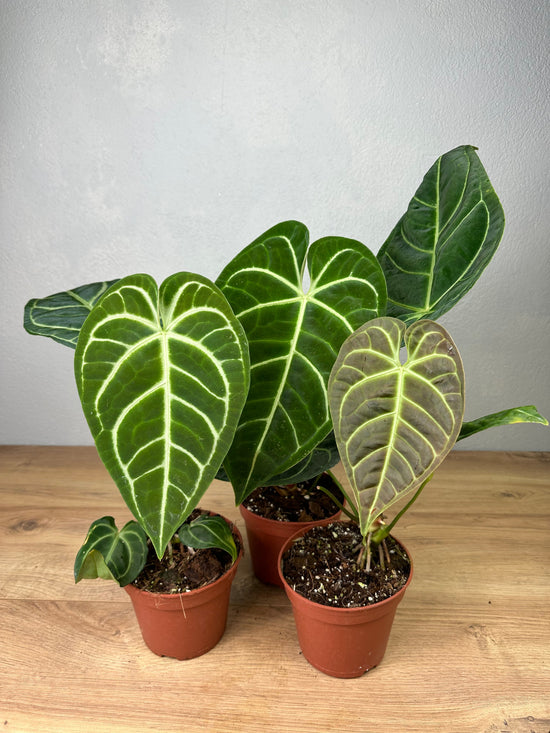 Anthurium shelves
Anthurium shelves- Regular price
-
From
€5,99 - Regular price
-
€19,99 - Sale price
-
From
€5,99
-
Anthurium "Snow Queen"
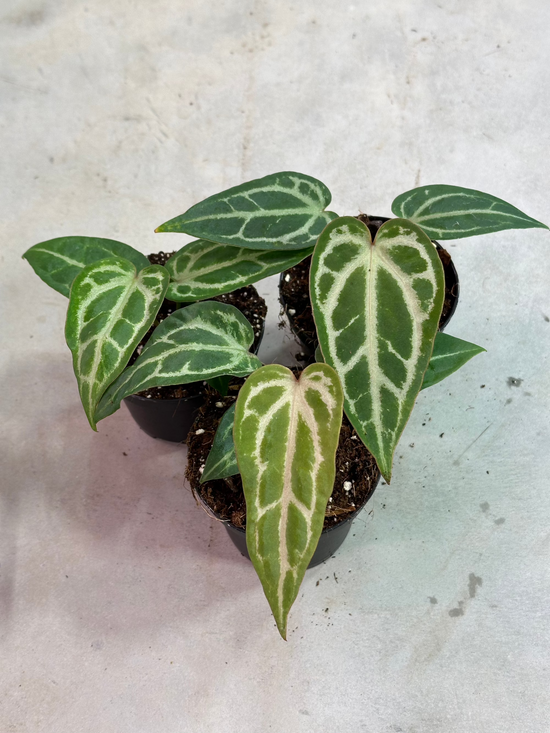 Anthurium "Snow Queen"
Anthurium "Snow Queen"- Regular price
-
€7,99 - Regular price
-
€19,99 - Sale price
-
€7,99
-
B Ware Plants / sad plants Part 3
 B Ware Plants / sad plants Part 3
B Ware Plants / sad plants Part 3- Regular price
-
€39,00 - Regular price
-
- Sale price
-
€39,00
-
Anthurium Carlablackiae M
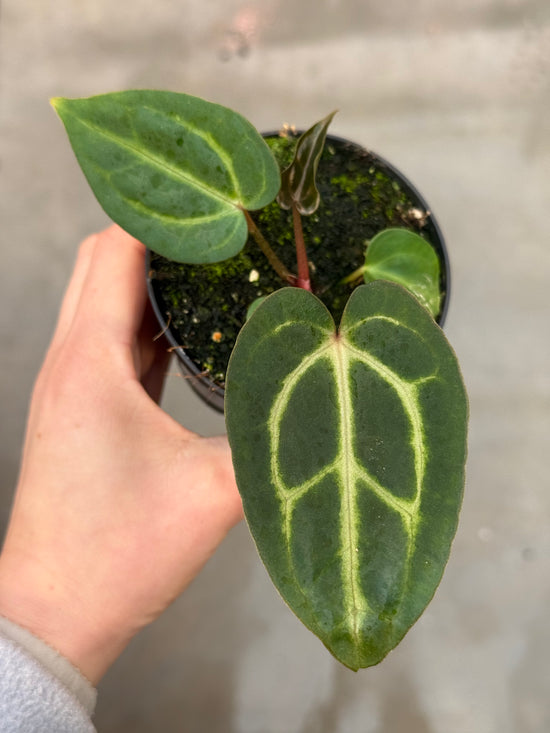 Anthurium Carlablackiae M
Anthurium Carlablackiae M- Regular price
-
€39,00 - Regular price
-
€89,00 - Sale price
-
€39,00






